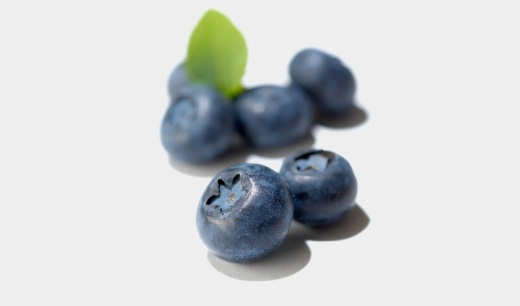A Bounty of Blueberries

Did you know blueberries are a native to North America? A distinctive plant among the berry category, blueberries are nutritious, easy to grow and harvest, and plentiful in the Firelands. Used for both food and medicine the blueberry is easily confused with similar species, and is traditionally used in puddings, buckles, kuchen and pies. The blueberry muffin, however, is a newer idea.
One of the true American fruits, our love of this intensely violet-blue gem began with the first explorers and settlers. In our modern quest for more fiber, vitamins and anti-oxidants (those cancer prevention compounds) the blueberry beats most other fruits. It is low in calories, low in sodium, has zero cholesterol, and is high in fiber—really high -- a pint of blueberries has a whopping eleven grams of fiber!
Also confused with other species, blueberries have been known as bilberries, whortleberries and hurtle berries, Native Americans used the berries, leaves and roots for medicinal purposes. The leaves were steeped into a tea that was believed to be good for the blood, and the juice was used to treat coughs. Interestingly, the pectin in the blueberry is known to bind with cholesterol and “wash” it out of our system—so it is good for our blood. It’s also good to hide behind to avoid being killed by Indians, as reported by Mr. Downing in a July 1820 story in the Western Review and Miscellaneous Magazine. Seems Mr. Downing was recounting an “Indian attack” he lived through as a youth in 1786-87. Having discovered a small hunting party while out wandering, he took refuge by hiding behind “whortleberry bushes” and averted a ghastly and untimely death, no doubt.
But what we really want to know is: where do the blueberry muffins come in? Christianity in the Kitchen: A Physiological Cookbook, (1857) had a recipe for whortleberry pudding which called for tying and boiling in a buttered bowl. I found muffins mentioned in Buckeye Cookery and Practical Housekeeping, published in 1877, but it stated only that muffins should be baked in muffin rings. The Good Housekeeping’s Book of Menus, Recipes, and Household Discoveries, 1922 finally had a recipe for berry muffins which looked about right. I knew I was getting closer.
Then -- eureka! The Home Dietitian’s Cook Book, 1938 had a nice looking recipe for ‘Berry Muffins” “using one cup of berries, any kind. Seems we have one of those foods that is so common it was baked for many years before actually having a formal recipe. “Gem” pans mentioned in older recipes are early muffin tins. So the muffins we know today, are an early twentieth century creation. Enjoy these muffins often, baking more than you will eat and freezing. Use frozen berries, unwashed, and wash them to thaw them for the best flavors of summer whenever you have a craving.